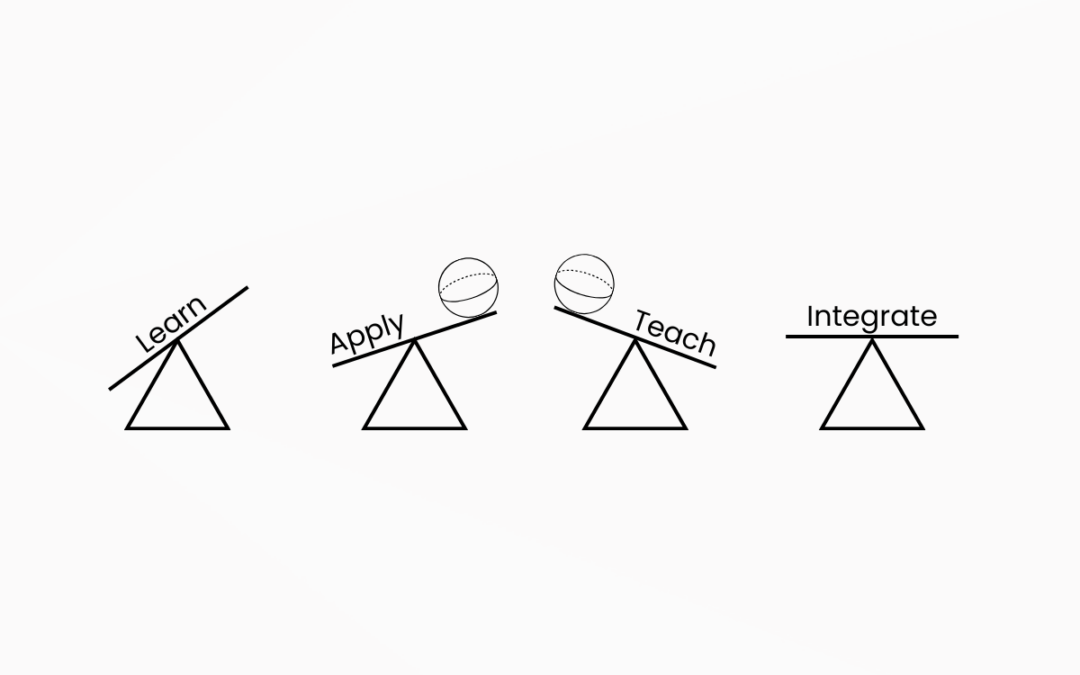Read time: 4 minutes
Key Points
- Select and Simplify: Choose a concept, understand it deeply, and simplify it as if explaining to a beginner or a child.
- Review and Refine: Continuously refine your explanation to ensure clarity and a deep understanding, revisiting source material as needed.
- Organize and Revisit: Keep your simplified explanations organized, regularly review them, and share with others for feedback and reinforcement.
What is the Feynman Technique?
The Feynman Technique is a powerful way to supercharge your learning potential and truly understand complex subjects. Richard Feynman, a brilliant physicist, and nobel prize winner, discovered that many people use fancy words and complicated language to cover up their lack of understanding. But Feynman’s technique helps you cut through the complexity and truly grasp the essence of any concept.
Feynman’s learning technique comprises four key steps:
- Select a concept to learn.
- Teach it to a child.
- Review and refine your understanding.
- Organize your notes and revisit them regularly.
Let’s delve deeper into these steps.
Feynman’s secret lay in understanding the true essence of a concept rather than merely knowing its name, leading to his remarkable achievements. This learning technique can be applied universally, irrespective of the subject.
1. Select a concept to learn.
Choose a concept you want to learn and grab a blank sheet of paper. Write down everything you already know about the topic. As you learn more, add it to your sheet. Use different colors to see your knowledge grow.
2. Teach it to a child.
- Now, imagine explaining the concept in simple terms that a 12-year-old could understand. If you don’t have access to a child, consider how you would explain it to a friend or colleague with no background in the subject.
- Simplify your notes, removing jargon and complexity. This process uncovers your true grasp of the topic.
“Genius lies not in making things more complex, but in unraveling the complexity to reveal the beauty of simplicity.” – Albert Einstein
3. Review and Refine
- Go over your simplified explanation. Aim to clarify and refine it until it’s free of any confusing elements. If certain parts still seem complex, revisit the source material to enhance your understanding.
- This step is crucial for deepening your comprehension and ensuring that you’re not just memorizing facts, but truly understanding them.
4. Organize your notes
- Finally, organize your notes and review them regularly. Share your explanation with others to test your understanding.
- Pay attention to their questions and areas of confusion. By following this technique for all your learning, you’ll create a collection of simple explanations that you can revisit periodically.
Remember, travelers, simplicity is the key to true understanding. Embrace simplicity, and you’ll master any subject with ease.
Actionable Nudges:
- Choose a complex concept you’re currently studying and write down everything you know about it in a simple and clear manner.
- Simplify your notes further, removing any jargon or complicated terms, until you can explain the concept to a child.
- Reflect on your simplified explanation and identify areas that still sound confusing or need refinement. Go back to the source material to improve your understanding.
- Share your simplified explanation with someone else and ask for feedback on its clarity and effectiveness.
- Regularly review and revisit your simplified explanations to reinforce your understanding and retention.
- Create a dedicated binder or digital folder to organize your simplified explanations, allowing for easy access and future reference.
Questions to ask yourself:
- Do I take the time to reflect on what I know and what I still need to learn?
- What topic am I curious about?
- How can I experiment with the Feynman Technique to learn with curiosity?
- How can I simplify my explanations to a level that even a child could understand?

